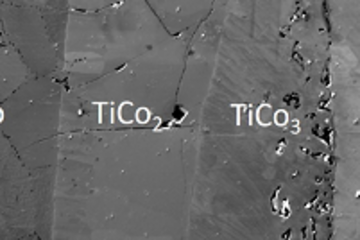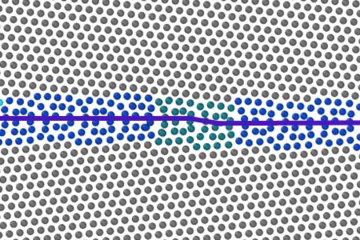All genres
241.
Talk
Unraveling the temperature dependence of the yield strength of tungsten single crystals using atomistically-informed crystal plasticity. 8th International Conference on Multiscale Materials Modeling, MMM2016, Dijon, France (2016)
242.
Talk
A Spectral Method to Solve Multi-Physics Coupled Elasto-Viscoplastic Boundary Value Problems. 8th International Conference on Multiscale Materials Modeling, MMM2016, Dijon, France (2016)
243.
Talk
Unraveling the temperature dependence of the yield strength in BCC metals from atomistically-informed crystal plasticity calculation. Dislocations 2016, Purdue University, West Lafayette, IN, USA (2016)
244.
Talk
Using the Spectral Solver. 5th International Symposium on Computational Mechanics of Polycrystals, CMCn 2016 and first DAMASK User Meeting, Düsseldorf, Germany (2016)
245.
Talk
Crystal Plasticity Simulations on Real Data: Towards Highly Resolved 3D Microstructures. 26th International Workshop on Computational Mechanics of Materials - IWCMM 26, Tomsk, Russia (2016)
246.
Talk
Spatially Resolved Through-Process Modelling. MSE 2016, Darmstadt, Germany (2016)
247.
Talk
Kristallplastizität in martensitischen Mikrostrukturen. 4. Jahrestreffens des DGM-Regionalforums Rhein-Ruhr, Hydro Aluminium Bonn, Bonn, Germany (2016)
248.
Talk
Multiscale micromechanical modelling for advanced high strength steels including both the TRIP and TWIP effect. MSE 2016, Darmstadt, Germany (2016)
249.
Talk
Integrated experimental and simulation analysis of lattice defects and micromechanics in steels. Materials Modeling Colloquium, Universität Stuttgart, Stuttgart, Germany (2016)
250.
Talk
Numerically Robust Spectral Methods for Crystal Plasticity Simulations of Heterogeneous Materials. ECCOMAS Congress 2016, Crete, Greece (2016)
251.
Talk
Micromechanics using spectral method: Modelling of interface decohesion in polycrystalline microstructures. PETSc User Meeting, Vienna, Austria (2016)
252.
Talk
Modeling Interface Decohesion in a Spectral Framework. ECCOMAS Congress, Crete, Greece (2016)
253.
Talk
Crystal Plasticity Simulations - Fundamentals, Implementation, Application. Micromechanics of Materials, Zernike Institute for Advanced Materials, University of Groningen
, Groningen, The Netherlands (2016)
254.
Talk
DAMASK Evolving From a Crystal Plasticity Subroutine Towards a Multi-Physics Simulation Tool. Focus Group Meeting “Metals”, SPP 1713, Bad Herrenalb, Germany (2016)
255.
Talk
On the usage of HDF5 in the DAMASK crystal plasticity toolkit. 2nd International Workshop on Software Solutions for Integrated Computational Materials Engineering - ICME 2016, Barcelona, Spain (2016)
256.
Talk
Computational analysis of irregular rolling deformation in Nickel Aluminide single crystals. Thermec 2016, Graz, Austria (2016)
257.
Talk
Interfacial dislocation motion in single-crystal superalloys: dislocation interactions, vacancy supersaturation, and directional coarsening. Plasticity '16: The 22nd International Symposium on Plasticity & Its Cur
rent Applications
, Keauhou Bay, HI, USA (2016)
258.
Talk
Including damage modelling into crystal plasticity simulation. Plasticity '16: The 22nd International Symposium on Plasticity & Its Cur
rent Applications
, Keauhou Bay, HI, USA (2016)
259.
Talk
Multiscale micromechanical modelling for advanced high strength steels including both the TRIP and TWIP effect. Thermec 2016, Graz, Austria (2016)
260.
Talk
High-Resolution crystal plasticity simulations of real microstructures. 9th GAMM Seminar on MultiScale Material Modeling, Kaiserslautern, Germany (2015)











